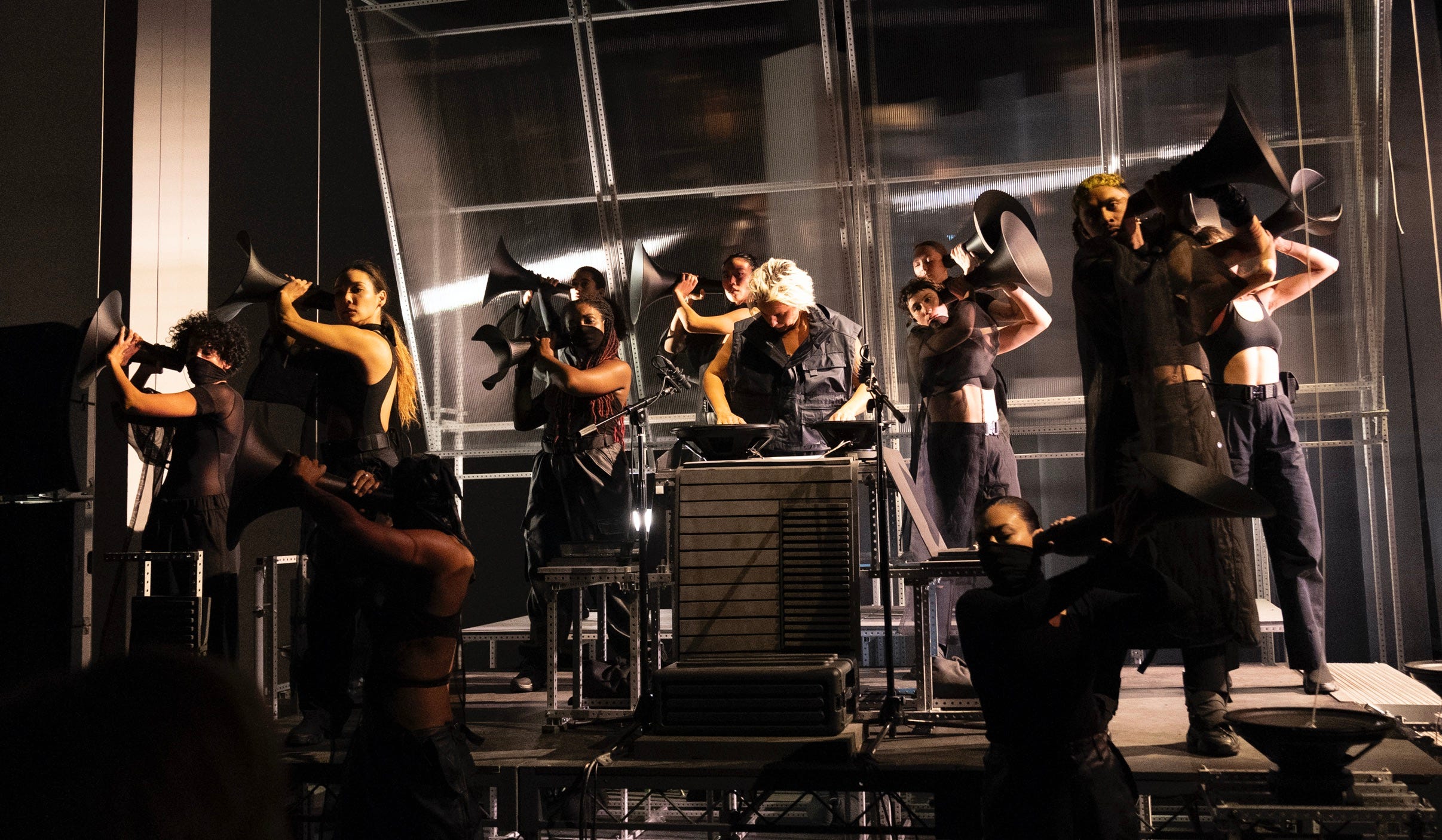The Industry: HIVE RISE (Capsule Review)


[Original publication: No Proscenium, 11/24/21]
Get Laura Hess’s stories in your inbox
Join Medium for free to get updates from this writer.
SubscribeSubscribe
There’s a collection of photographs by David Teplica entitled “Rapture.” The series consists of human bodies encased in fabric used to treat burn patients. Haunting and visceral, body parts and facial features are distorted, exaggerated, and obliterated. Made in response to friends who died of AIDS, the series is about love, disease, and fear of intimacy.
On Saturday, I was reminded of these photos and their symbolism when an industrial loading dock door shuddered open. Shrouded in black gauze with their heads obscured, figures held up black 3D-printed megaphones. Performers moved through the space, alone or in formation. There was no dialogue, only the choreography and eerie vocalizations which ranged from wind-like hushes to guttural screams. Performers’ manipulations of the megaphones created a doppler effect, both magnifying and tempering the sounds. Throughout the warehouse speakers supplied audio from a central stage, on which materials such as paper were “played” against the vibrations of miked subwoofer speaker cones, creating a cacophonous and throbbing sonic thread. This was HIVE RISE.
Described as “a physical encounter with sound,” the performance was like none other. Co-created by Ash Fure and LILLETH, HIVE RISE was produced by The Industry and presented in partnership with MOCA, making its U.S. debut after a 2020 premiere in Berlin. While The Industry founder Yuval Sharon has collaborated with the LA Philharmonic to create acoustic sculptures such as NIMBUS, The Industry is best known for its experimental takes on opera.
Conceived as a “training ground for tactical listening,” HIVE RISE embodied themes of isolation, discord, and abuse, along with the desire to connect and the right to thrive. A profound communal exchange, HIVE RISE articulated the primal heartbreak, rage, and existential loneliness of recent events such as the pandemic, and systemic issues such as colonization and injustices of all kinds. The experience was a shattering example of the transformational power of sound.